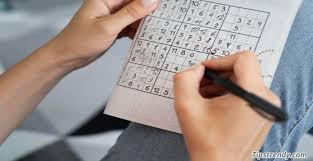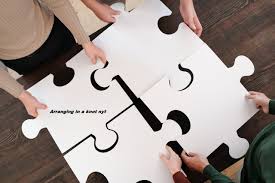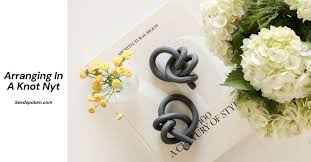Table of Contents
Introduction to arranging in a knot nyt
Arranging in a knot nyt: Attempt this if you have a restive neck pulse beating in the Oyereich crossword puzzle.
The New York Times monger is a favorite and a simple enough one at that, thank you very much, and love for it helps one start their day off with a satisfying dose of brain-teasing activities.
However, one of the unique crossword clues that always seems to baffle even the advanced members is “arranging in a knot.”
This common phrase may seem harmless and harmless in any way but relies upon the quite opposite as it drives you crazy trying to figure out the meaning as well as the exact answer.
Even if you are trying to find a solution to mend your ways or even if you are stuck, this will simplify as much as make you understand how one does this without getting frustrated and disgusted as a crossword puzzle.
Here is an example of great, fun, high-strung wordplay that can make you cry – using erythropoietin; how does that even work?
Understanding Clues and Answers

Crossword puzzles are where both language and context are put to good use.
Each has an associated word scramble, which typically does not take you in the most straightforward directions.
As for ‘arranging in a knot nyt, you will have to think a little more.
Think of thesaurus or analogous words.
The visual interpretation of the term could relate to tying or weaving of various kinds, from art to the environment.
Take care of the content and length of the answer; it’s also an important clue that helps reduce some chances.
Furthermore, interpreting clues often entails combining two skills—lateral problem-solving and understanding many aspects of culture, including pop Diet; why is the idea included so casually?
Adding these features enables answers to be found quickly. In this case, mental effort should be treated not only as a way of resolving problems but also as an understanding of the fun side of language.
Solving the arranging in a knot nyt

In the case of the girl in the New York Times Mini crossword puzzle, ‘arranging in a knot’ comes out top, and solving it is a joy.
This particular hint often leads the solvers in such a direction that they start looking for words like tie or knot.
When you read this clue, seek words that are used for other words.
Do not be surprised if words related to knots or tying things up come to your mind quickly.
You might consider other types of knots: sailor’s knots, ornament, and ties.
If some of the squares are already filled in, try repositioning some letters if you have them within reach.
Think of crossword puzzles as puzzles concerning volume motive.
Try to think outside the box and play with the answers.
Don’t restrict yourself to being conceptual, as the solution may be figurative.
Writing down all of your ideas to gain some distance may be helpful, reducing the psychological pressure.
Often, going away for a bit helps other thoughts come to your head when you return.
Tips and Tricks for Solving Crossword Puzzles
Arranging in a knot nyt Get the easier clues out of the way first.
They generally act as a step towards the harder ones.
Getting some letters in may lead to thoughts for other responses.
Get Prefixes and Suffixes. Phrases such as “un-,” “re-, “or “-ing,” for example, help you guess longer words that are usually hard to remember.
Pencil rather than a pen. Mistakes will be made, so a pencil is much more efficient since it allows you to fall back and use the erase function if you wish to try something different.
Make a word list to be used while solving puzzles.
Learn or remember four-letter names, acronyms, or other commonly used trademarked terms or pop-culture references often appearing in such cases.
You can afford to walk away from a situation for short periods when you feel you cannot go on and are getting mad.
When one returns, fresh thinking leads to different, new solutions to the problem.
These skills are needed for solid performance! Painlessly conquering a large base of crosswords will sharpen skills over time.
Appreciate and welcome each puzzle as a learning curve.
Common Mistakes to Avoid of Arranging in a Knot nyt
When addressing the hint “arranging in a knot nyt,” one might easily fall into some traps. One of them is overboard the clue.
Therefore, it is easier than before most of the time, and they cannot make that guesswork on the clues.
In addition, there is a tendency to neglect the number of letters the words should have.
Consider the number of letters that fit into the space allotment before getting deeper into possible answers.
On the other hand, excessive faith in uncommon knowledge bastions can also lead you down the wrong path. While trivia helps, most clues use pop culture or common language.
Besides, if there is partial knowledge of the answer, do not hesitate to use a plastic pencil in those ideas because these may suggest fresh and new turns when other processed words come up clean for the cross.
The common mistake is always sticking to only one answer for a short time.
There are times when one thing seems to work out for you at a time, deep thinking time; it may be good to think about other possibilities.
Chicago lies in the schedule because there is always room for both work and play while solving them!
Benefits of Regularly Playing Crossword Puzzles
Regular practice of solving crossword puzzles has multiple advantages.
Let’s start with the enhancement of one’s intellect.
Deciphering clues and providing answers constitutes a good workout for your brain.
Also, crosswords help improve language skills. You learn new words and constructions, which is helpful for students and active language learners.
Recurrent also helps improve problem-solving skills.
You learn to apply reason and creativity under pressure as you encounter difficult clues.
It is also an excellent source of entertainment.
By getting engrossed in crosswords, one can easily forget about everyday troubles.
It is a perfect method of interaction with people.
Collaboration through sharing solutions or competing against each other on the clock improves the experience.
Conclusion:
Making sense of ‘arranging in a knot NYT’ is a clue that intrigues many crossword fans, both young and old.
So, making your way in solving it becomes another step deeper into the intricacies of puzzle making.
A correct understanding of the question that needs solving is critical for any gaining achievement.
Concentrating on the internal words rather than just their synonyms, such as and or in, puns, can become helpful when confronted by a problematic solution such as ‘arranging in a knot.’
Be it sticking to a practice regimen or exchanging strategies with other grid runners, ensuring that your arsenal of crossword-solving strategies doesn’t deplete lets you tackle even the meanest-looking grids.
It is true that the more you work on them, the more you will find ways that work with your style.
Staying clear of mistakes that most beginners make, such as being hesitant to look for the most logical answers or taking one’s time to complete the whole puzzle within no time, can enhance one’s experience carefree.
In addition, the pressure of time should be lifted. Sometimes, just concentrating on a puzzle tends to get one in a fuzz, and leaving the puzzle allows one’s reasonable capacity to go.
Indulging in various crosswords has many more advantages than just pure recreation. These puzzles enhance our cognitive abilities and keep us young in our wits.
There’s no denying that every grid completed brings a sense of achievement.
Even arranging in a knotty does not sound so horrific with time and practice.
Every session proves productive, helps improve efficiency in problem-solving, and entertains for hours on end.
FAQs:
What does “arranging in a knot nyt” mean?
It refers to a crossword clue about tying or weaving.
How can “arranging in a knot nyt” improve problem-solving?
It fosters lateral thinking to tackle clues creatively.
What should you consider when “arranging in a knot nyt”?
The letter count and related terms like tie.
Why is “arranging in a knot nyt” puzzling?
It uses figurative language, leading to various interpretations.
What strategies help with “arranging in a knot nyt”?
Start with easier clues and use a pencil for corrections.
How does “arranging in a knot nyt” boost language skills?
It introduces new vocabulary through context.
What common mistake happens with “arranging in a knot nyt”?
Ignoring the letter count can lead to wrong guesses.
Why is collaboration good for “arranging in a knot nyt”?
It enhances understanding through shared strategies.
How does practicing “arranging in a knot nyt” help cognition?
It sharpens critical thinking and memory.
What’s the key takeaway from “Arranging in a Knot nyt”?
Each puzzle is a chance to learn and improve.

